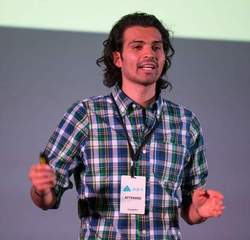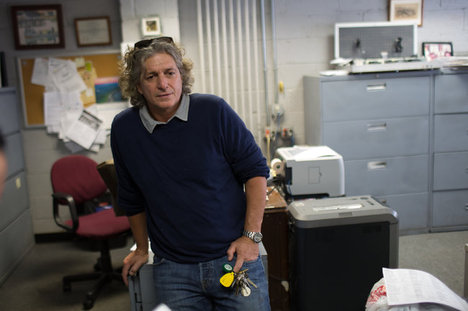(p. 179) About six months after Gmail came out, Bill Gates visited me at Newsweek‘s New York headquarters to talk about spam. (His message was that within a year it would no longer be a problem. Not exactly a Nostradamus moment.) We met in my editor’s office. The question came up whether free email accounts should be supported by advertising. Gates felt that users were more negative than positive on the issue, but if people wanted it, Microsoft would offer it.
“Have you played with Gmail?” I asked him.
“Oh sure, I play with everything,” he replied. “I play with A-Mail, B-Mail, C-Mail, I play with all of them.”
My editor and I explained that the IT department at Newsweek gave us barely enough storage to hold a few days’ mail, and we both forwarded everything to Gmail so we wouldn’t have to spend our time deciding what to delete. Only a few months after starting this, both of us had consumed more than half of Gmail’s 2-gigabyte free storage space. (Google had already doubled the storage from one gig to two.)
Gates looked stunned, as if this offended him. “How could you need more than a gig?” he asked. “What’ve you got in there? Movies? PowerPoint presentations?”
No, just lots of mail.
He began firing questions. “How many messages are there?” he demanded. “Seriously, I’m trying to understand whether it’s the number of messages or the size of messages.” After doing the math in his head, he came to the conclusion that Google was doing something wrong.
The episode is telling. Gates’s implicit criticism of Gmail was that it was wasteful in its means of storing each email. Despite his currency with cutting-edge technologies, his mentality was anchored in the old paradigm of storage being a commodity that must be conserved. He had written his first programs under a brutal imperative for brevity. And Microsoft’s web-based email service reflected that parsimony.
The young people at Google had no such mental barriers. From the moment their company started, they were thinking in terms of huge numbers. Remember, they named their company after a 100-digit number! Moore’s Law was as much a fact as air for them, so they understood that the expense of the seemingly astounding 2 gigabytes they gave away in 2004 would be negligible only months later. It would take some months for Gates’s minions to catch up and for Microsoft’s Hotmail to dramatically increase storage. (Yahoo Mail also followed suit.)
“That was part of my justification for doing Gmail,” says Paul Buchheit of its ability to make use of Google’s capacious servers for its storage. “When people said that it should be canceled, I told them it’s really the foundation for a lot of other products. It just seemed obvious that the way things were going, all information was going to be online.”
Source:
Levy, Steven. In the Plex: How Google Thinks, Works, and Shapes Our Lives. New York: Simon & Schuster, 2011.
(Note: italics in original.)







